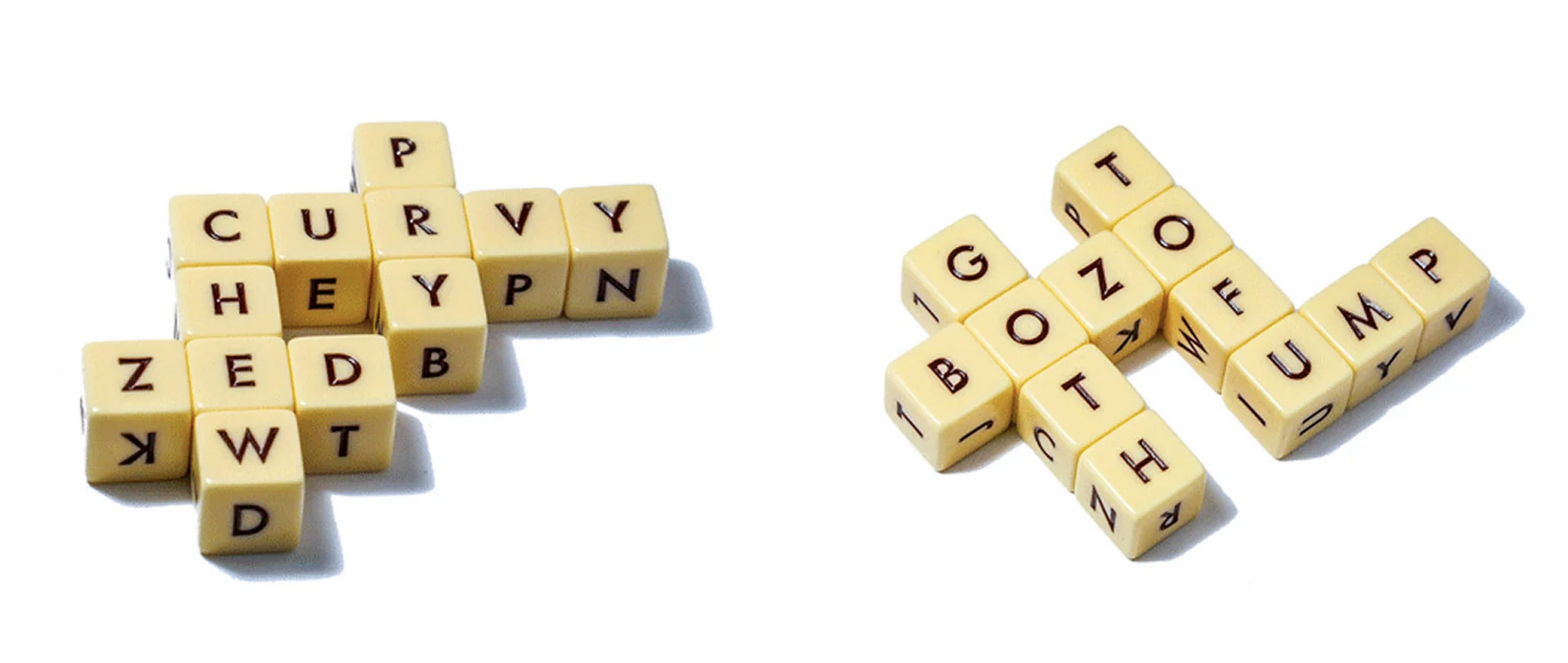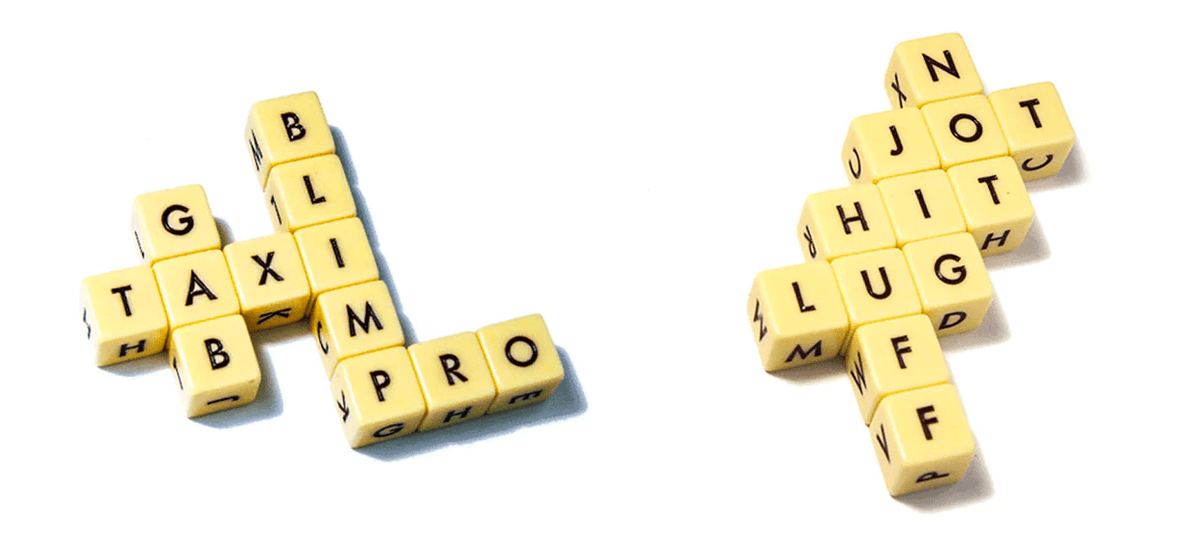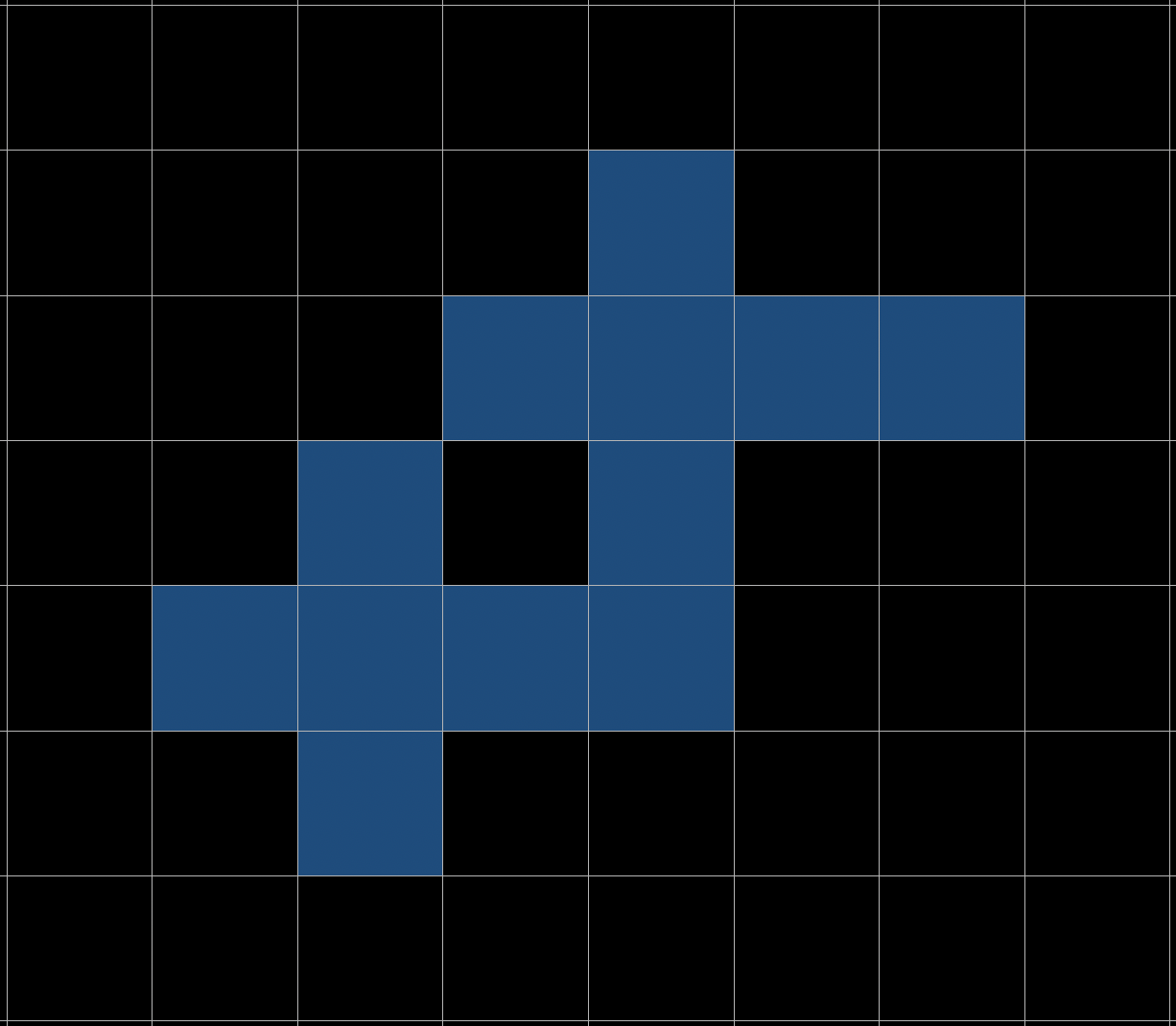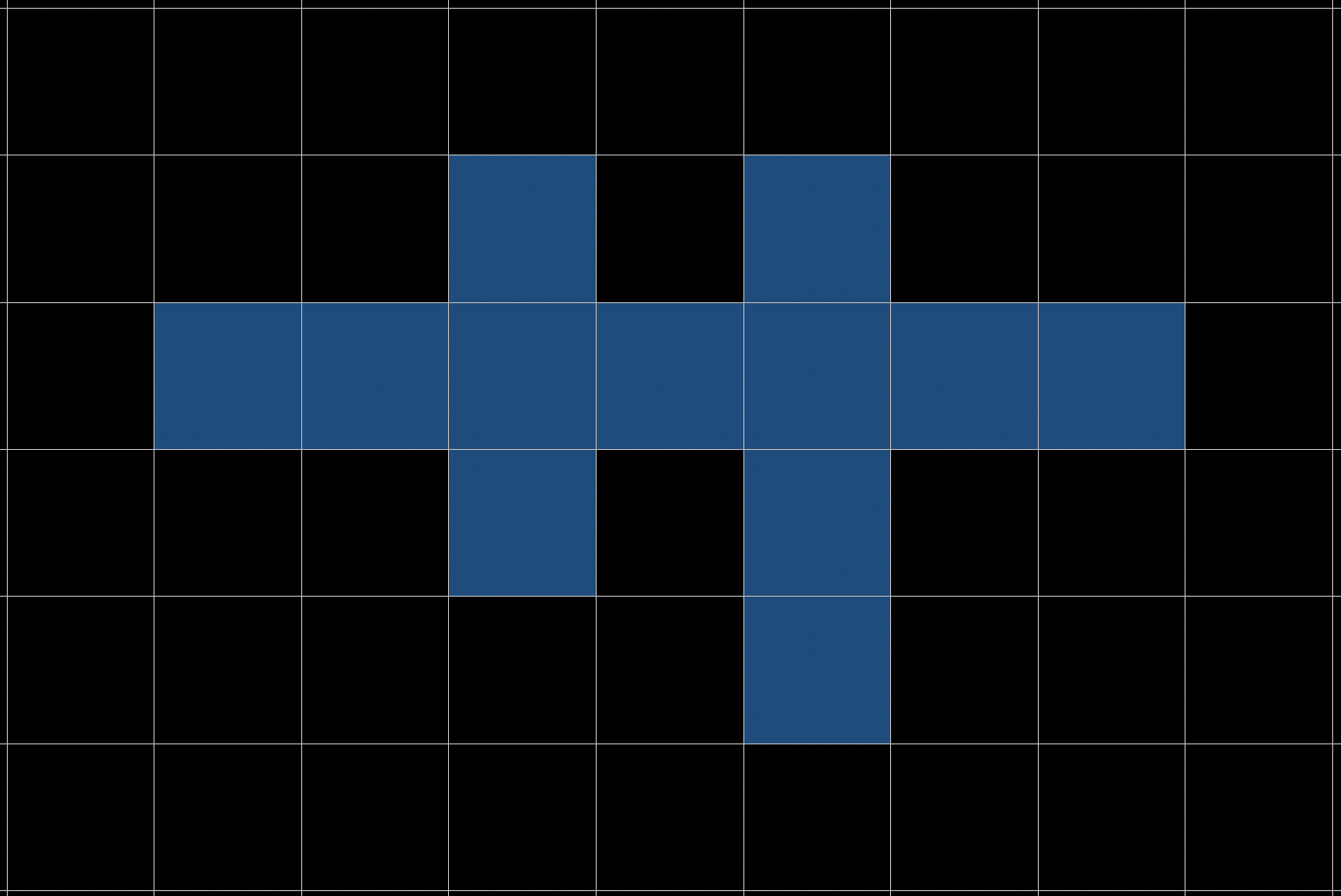send feedback
This is a technical overview related to Daily Q-less, my web adaptation of the Q-less word puzzle game.
The most frustrating part of the Q-less dice game is that, some small percentage of the time, the letters you roll have no valid solution.1 If this happened in Daily Q-less, the Snyder family group chat would never let me hear the end of it. But I don’t want to pre-solve every day’s roll myself to verify it. That’s what programming is for.
Quick explanation if you don’t know the rules of Q-less
- You get 12 letters. (In the physical game, these are selected by dice that you roll.)
- Use the letters to form English words.
- Your words must be connected to each other, like a crossword puzzle.
- No 2-letter words allowed.
Here are some example solutions:

Why this is hard
When I solve a Q-less roll, here’s how I go about it:
- Find a word (hopefully using some of the more difficult letters, like V or X).
- Find a good word that intersects it.
- Find a third word that intersects one of the first two words.
- See if my remaining letters (if any) can fit anywhere.
- If they don’t fit, go back to an earlier step and try a different word.
So why can’t a computer program do the same thing? Well, it can—if you’re willing to wait a few hours. This was my first approach, but it never finished running, because there are so many arrangements of words that never actually lead to a solution. Some approximate math:
- A typical roll has about 100 legal words it can form.
- After placing the first word, we typically have 3-5 intersection points, and we have to check which of the 100 legal words use exactly one of the letters already used. This step mostly can’t be memoized.
- Now that we’ve placed a second word, we typically have 5-8 intersection points. Some placements of the next word could produce a grid with a 2-letter fragment, which is isn’t allowed, but we can’t actually exclude those placements. Why? Because later words can turn those 2-letter fragments into 3-letter words. Take the solution on the right in the below image. It’s impossible to construct that solution without the grid having a 2-letter fragment at some point.

- Once we have three words in the grid, it becomes even more complicated to see where the remaining letters can fit, because a newly placed word might intersect two other words at once. And we also need to start checking that the spaces before and after the word are empty.
- Odds are, at some point during this process, we get stuck with some letters we can’t use. Even if we do use all the letters, we need to ensure every 2-letter fragment became part of a valid 3-letter word. If either of these checks fail, we have to backtrack and try a different word.
I don’t know the typical number of branches—it takes my laptop too long to count them all—but I would estimate something on the order of millions, depending on the roll, with thousands of legality checks needed for each branch. So, unless you have a supercomputer or a lot of patience, the problem requires a different approach.
What did work
The better solution was to split the solver into two stages. The first stage ignores the letters and computes just the legal grid shapes a solution can take. This is a much more tractable problem than the above, because it reduces the branching factor and reduces the overhead per branch.
Here’s the new algorithm:
- Put down a letter at the origin $(0, 0)$.
- Find all the places we can put a letter adjacent to an existing letter.2
- Check whether any of these grids are functionally identical.3 If so, get rid of the duplicates.
- Repeat until all 12 letters are added.
- Finally, remove any grids with a 2-letter fragment remaining.
There are only a couple thousand branches by the end, so despite the overhead from duplicate checking, it only takes a few minutes. And the best part is: it only has to be done once! I stored all 6,223 distinct grids as a JSON file, noting each word’s length, location, intersection points, and whether it’s across or down.
Then, using that set of grid shapes, here’s how to solve a Q-less roll:
- List of all possible words using those letters.4
- Select a grid.
- Slot a word into the first word slot in the grid.
- Slot a word into the next slot using the remaining letters and respecting all intersecting letters that need to match.
- Repeat until all letters are used, or backtrack if there are no legal words to put in the next slot.
- If the chosen grid doesn’t work, try another.
This works, and it only takes a matter of seconds to find all solutions. To improve performance, I ordered the grids by a rough measure of $(\textrm{likelihood of solution}) / (\textrm{average number of branches})$. While the grid that is most likely to have a solution looks like this:

It tends to have a large number of branches, whereas the most efficient grid looks like this:

It doesn’t have solutions as often, but because it only has 3 word slots, it’s much quicker.
Other benefits of the solver
The solver also allows me to roughly quantify a roll’s difficulty. Some rolls have thousands of solutions, and some have only one (or none). To approximate how difficult a roll is, the solver counts the number of grids it needs to check before finding ten distinct solutions. Rolls are assigned to days of the week based on that count:
- <10 grids: discard, too easy
- 10–20 grids: Monday
- 21–150 grids: Tuesday
- 151–600 grids: Wednesday
- 300+ grids: Thursday5
- 600+ grids: Friday
- <10 solutions found: Saturday
- <10 solutions found: Sunday5
So, much like the New York Times crossword, the Daily Q-less scales in difficulty throughout the week. If I show the game to a friend, I make sure their first try is on a Monday or Tuesday so they can ease into it. Meanwhile, I like to solve it from Thursday through Sunday when it’s hardest.
Wow! What an article. If this got you interested in Daily Q-less, I encourage you to try it out! And if you think it demonstrates my excellent coding and problem-solving ability, I encourage you to hire me. The code for Daily Q-less and my other games is open-source, and you can view it on GitHub. The file discussed in this blog post is here.
-
Or, more often, the only solutions involve some obscure or archaic term. ↩
-
One optimization I used here: if there is a 2-letter fragment somewhere in the grid, always place the next letter at one end of it to make a 3-letter word. ↩
-
Shaped the same but translated and/or diagonally flipped ↩
-
The solver uses a subset of the game’s wordlist that excludes slang words and obscure words, so there’s always a solution that only uses words just about anyone could agree are “legit”. ↩
-
The Thursday and Sunday puzzles are allowed to have any set of 12 letters, not just a set that could appear on the real Q-less dice. Even the letter Q can appear! ↩↩